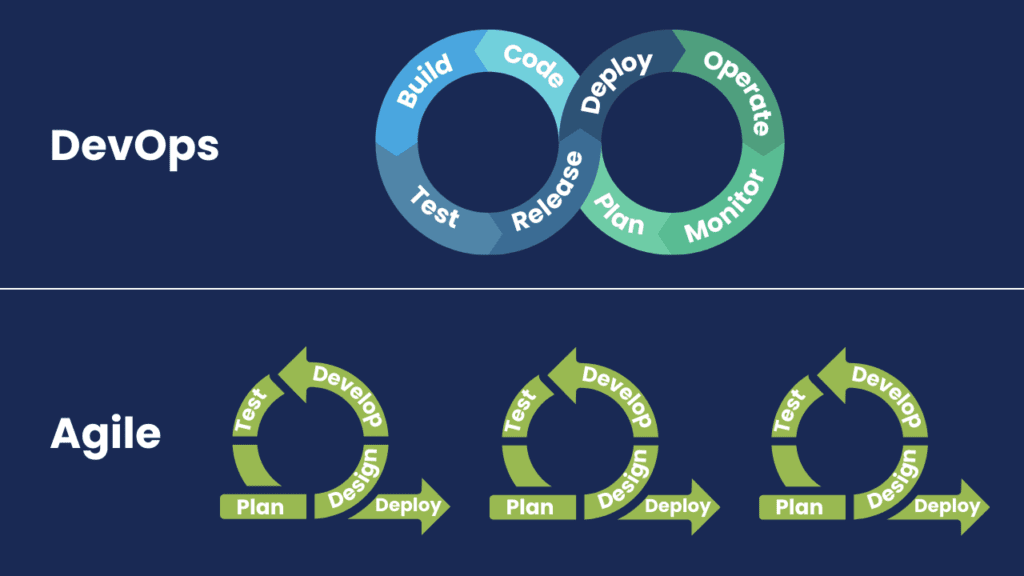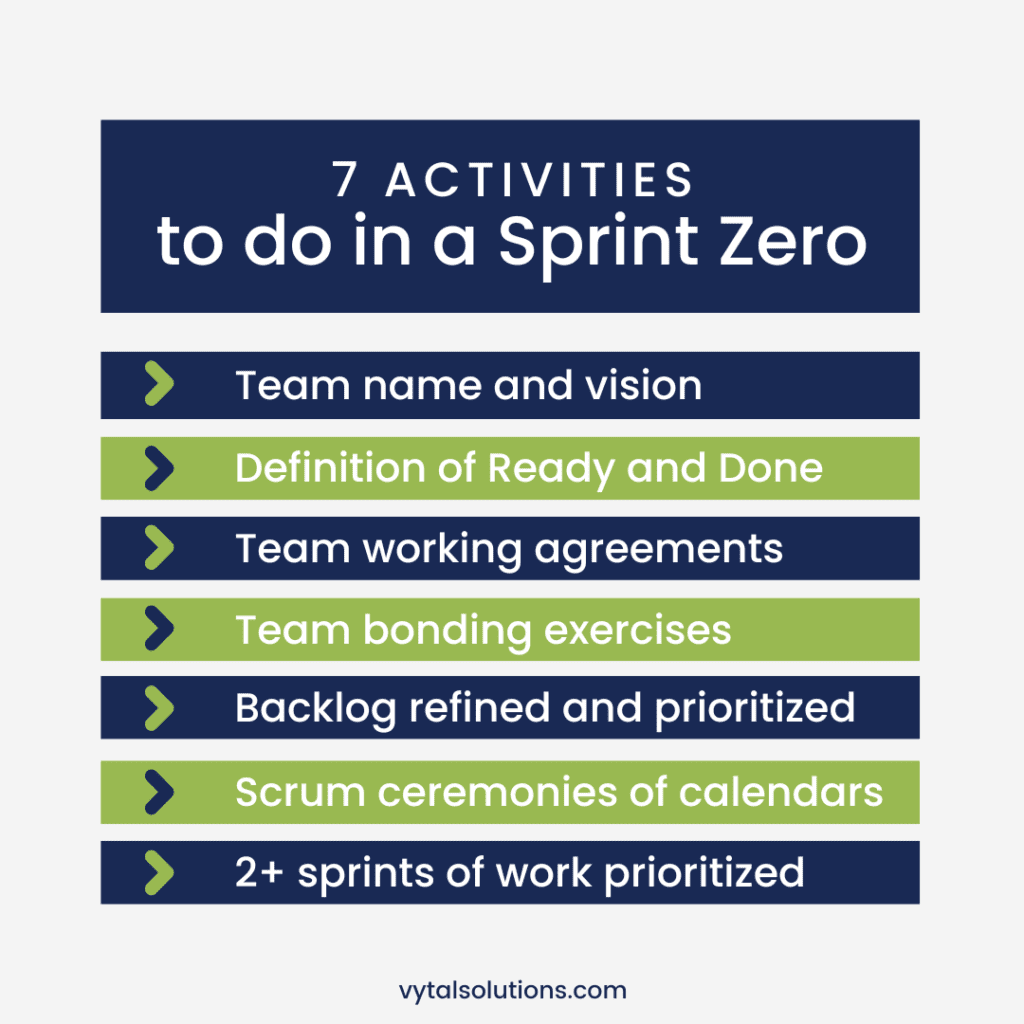The Worst Agile Transformation Mistakes – And How To Avoid Them
Introduction

Organizations must stay at the top of their game in this competitive market by delivering value faster with fewer defects and rework. Agile frameworks promise this. However, most Agile transformations fail. Below we’ll look at some challenges organizations face and how to overcome them.
Why Agile Fails
1. Organizations think Agile will solve all their problems.
Many times leadership has unrealistic expectations, assuming that by switching to Agile, all their delivery problems will disappear. They believe Agile will automatically cause an increase in quality and employee morale, decrease defects, and lead to customer satisfaction. While this could all be true, the results take time.
This is not something that is going to happen overnight. It takes time to mature processes and shift from a waterfall mindset to an Agile mindset. Leaders get frustrated when they don’t see their pain points going away within a week or two.
2. “My competitor is doing Agile, so I should do it too.”
Sometimes, organizations are not motivated and invested enough to switch to Agile. Only when they hear about their competitors implementing Agile, do they want to shift too.
If that is the motivation behind pursuing Agile, that will not take you far enough. Soon you will find faults with the Scrum or Kanban framework and find reasons to opt out after a short time. The focus should be on the business value you will gain by aligning the agile transition with your business goals.
3. Agile is DevOps and DevOps is Agile
The common myth is that Agile is synonymous with DevOps and vice versa. Organizations believe they can start doing DevOps if they switch to Agile. They think they’ll have a CI/CD pipeline that will allow them to deploy to Production several times a day, just like Amazon and Facebook can deploy to Production.

DevOps and Agile are both focused on achieving stability, which they accomplish through integrating and emphasizing testing early and often. However, DevOps is a different framework that relies on automation to bring more flexibility and security to the execution process and delivery pipeline while removing silos between operations and development teams.
4. Employees’ reluctance to embrace and adopt Agile
There is nothing permanent except change. Studies show that now with the software delivery pace increasing, along with the need to deploy often and with fewer errors, the waterfall approach does not work. There is a need for a framework that focuses on collaboration, customer feedback, and rapid releases. Enter Agile. The organization should give new agile teams the freedom to learn from failures. Agile ceremonies are there for a reason. Don’t think of those as just another meeting; instead, focus on the value.
5. “We’ve been Agile for three months; let’s switch to Scaled Agile Framework (SAFe).”
Leaders want results, and they want them soon. As leaders start seeing some benefits of Agile across a few teams within a few months, they want to grab the next glossy, shiny thing. Sometimes this is to show their competitors that they are one step ahead. This may look like implementing the Scaled Agile Framework (SAFe) within a few months of implementing the Agile framework. A certain level of maturity needs to be reached first, which makes switching risky. Additionally, most team members need to be bought into Agile.
Before scaling, the following factors must be in place. The Agile ceremonies should work effectively; daily stand-ups should end in 10-30 minutes (and not turn into two-hour discussions!). Sprint retrospectives should allow inspecting and adapting with tangible action items; Sprint reviews must demo the effectiveness and results achieved in the Sprints.
Additionally, leaders should reflect on whether they have enough teams implementing the Scrum and Kanban frameworks successfully and if they have enough numbers to form an Agile Release Train (50-120 team members) so that we can fully reap the benefits of SAFe. From an organizational level, are they mature enough that they can embark on the SAFe framework? Are they ready to do PI Planning (where several sprints get planned together)? These are essential questions before jumping on the SAFe bandwagon and thinking about how we can scale.
Steps to a Successful Agile Transformation
Now that we understand why Agile transformations fail, let’s review the tangible steps one can take towards a successful transformation.

1. Start small
Start small with a pilot. Identify one existing team, ideally a cross-functional team, to implement Agile. Next, identify a seasoned Scrum Master and Product Owner who are 100% dedicated to that Agile team. Start with a simple feature and put a realistic timeframe of 4-6 six Sprints (~ three months) to assess the progress.
Most importantly, communicate the success achieved at the end of each sprint to leadership. Assess what’s not working and adjust the next sprint accordingly. After three months, decide if you’ll move forward with two to three additional teams to undergo the Agile transformation. If you have not achieved what you wanted after three months, assess what can be changed and revise as appropriate for the next set of teams. Remember that the beauty of Agile is to adapt and make the framework work for you, your environment, and your organization.
2. Be Patient
Results won’t be seen overnight. Leaders need to be patient when going through the pain of Agile transformation. Here’s an example of what realistic expectations look like:
While working with a CIO undergoing an Agile transformation, he drew three rows on a whiteboard in his room. The first row had a list of goals he wanted to achieve in the first three months, while the second row listed accomplishments he wanted to reach in six months. Finally, the last row recorded goals to accomplish in one year. Laying out your short-term and long-term goals is an excellent way of setting realistic expectations while keeping a timeline in place.
Transparency and open communication can be seen quickly in three months. In contrast, defects and faster time to market might take longer.
3. Have a Sprint Zero when starting with a new Agile team
A Sprint Zero helps teams adjust to the Scrum or Kanban framework while establishing the tools and processes needed to ensure they’re ready for Sprint One. The Sprint Zero will also help with team bonding and morale for folks new to the team.
Below are a few recommended activities to be conducted in Sprint Zero:

4. Retain your company culture.

Agile is a methodology that is highly flexible and adaptable. Nothing in Agile says you have to do things a specific way. One of the most important things to any organization is its people and company culture. A company needs to continue to retain its company culture while going through an Agile transformation.
For example, a financial organization had a policy about no-meeting Fridays. As soon as they started the Agile transformation, they started scheduling daily stand-ups, retros, and sprint reviews on Fridays. This policy change did not sit well with its employees, and they began to pinpoint that as a reason not to adopt Agile.
As stated earlier, Agile does not dictate anything. It heavily focuses on transparency, inspection, and open communication. The ceremonies are some ways to achieve Agile values. However, organizations must be mindful of the company culture and keep that focused.
In my earlier example, the CIO realized that enforcing Agile ceremonies on a Friday would reduce employee morale. So, they decided to change the sprint cadence to start on a Tuesday and end the sprint on a Wednesday. In doing so, they could schedule sprint reviews and retros on a Wednesday and keep Friday meeting-less, as was the case before the Agile transformation.
Conclusion
To summarize, Agile transformations often fail because leaders set up the wrong expectations, want results right away, and try to achieve a target that was never realistic, no matter which delivery framework they used.
Just like the hare and tortoise story, ‘slow and steady wins the race; if you approach Agile transformation with an open mind, patience, and enthusiasm, you will be surprised to see the results you can achieve.
For a complimentary consultation, email [email protected]
